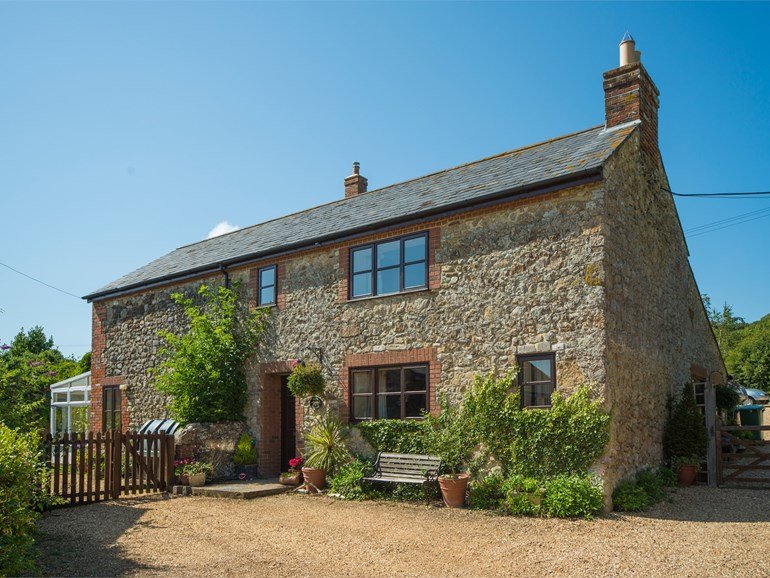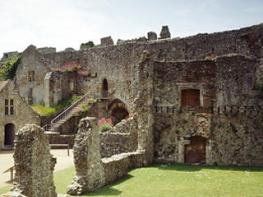A really excellent, well-managed park set in a peaceful village location amid downs and…
Shalfleet and Newtown Estuary

Discover the history of the island's former capital and birdlife on the salt marshes and creeks of the Newtown Estuary.
3.7 miles (5.6kms)
About the walk
The Isle of Wight village of Shalfleet developed where the Caul Bourne widens into a creek at the head of the Newtown Estuary. Take a look at the church on the other side of the A3054, with its impressive, fort-like tower, built in the 11th century with 5ft (1.5m)-thick walls and used as a refuge from French invaders during the 14th century, and stroll out to the small 17th-century quay, once busy with boats unloading coal or taking on corn and now popular with yachts and sailing dinghies.
Newtown
The most ancient of the island boroughs, Francheville, as Newtown was once known, was the island’s capital, being laid out by the Bishop of Winchester in 1256. Situated on the Newtown River estuary, it developed into a major seaport, with great, masted ships dwarfing bustling quays and trade thriving with local salt and oysters. Its streets were designed on a grid system and their names (Gold Street, Drapers Alley) recall the medieval merchants and craftsmen, although most are now only grassy lanes. Fortunes changed in 1377 when the town was burnt down during a combined French and Spanish raid. It was never fully rebuilt, although the town hall was rebuilt in 1699, and until 1832 it returned two Members of Parliament. Today Newtown, which has no through traffic, is a tranquil place best explored on foot. You can wander along a network of footpaths through the old streets and visit the beautifully restored Victorian church, and the isolated Old Town Hall where you can learn more about the history of this fascinating place.
The Marshes
Perhaps surprisingly, the windswept salt marshes and mudflats were only created in their present form as late as 1954, following a violent winter storm which breached the sea wall. Bordering shallow creeks and the estuary, it is a magical place, and a paradise for both birds and birders. Wildfowl and waders abound here. Oystercatchers and redshanks probe the mudflats for morsels, a variety of ducks dabble in the shallows, nesting gulls squabble on Gull Island, and common and little terns glide through the summer air, flocks of geese wheel overhead in winter, and always and everywhere you can hear the bubbling call of the curlew.
Walk directions
Park on roadside beyond The New Inn and walk up Mill Road, then turn right at the fork to pass Shalfleet Mill. Cross the footbridge and follow the path up through woodland, swinging right and then left. Bear left and follow the drive to a road.
Turn left past Corf Farm and keep to the road for 700yds (640m) then turn left along Town Lane, signed to Newtown.
Cross the bridge at the head of Causeway Lake and take the path left (public footpath CB16a), towards Newtown village. Walk along the edge of the tidal creek to a gate, then along the lower edge of Hay Meadow. In the second field bear right up the slope to a gate and then join a tree-lined path leading into Newtown. At the lane, turn right to visit the church of 1837. Retrace your steps and follow the road round to the right. Keep ahead to pass a parking area at the end. Take the path through a gate beside the Old Coastguard Station, signed ‘To the Harbour’. Beyond a further gate, keep to the left-hand edge of the meadow to a gate and follow the raised path alongside the estuary. Continue to the black-painted shed at Newtown Quay.
Head inland across the narrow wooden boardwalk to a gate. In a few paces turn left and follow the footpath towards the bird hide (run by local experts in summer but visitors are welcome). Bear right at a gate, heading inland to a drive and the lane. Turn left, cross the stile on your left and proceed behind the houses to a stile and lane. Turn right, pass the Old Town Hall and follow the lane down to the bridge at Causeway Lake, Point 3. From here retrace your steps back to Shalfleet Mill and your car.
Additional information
Tracks, field paths, raised dykes and some roads, 2 stiles
Gently rolling farmland, woodland and salt marsh
Keep dogs under control
OS Explorer OL29 Isle of Wight
Parking at start on Mill Road
National Trust toilets in Old Town Hall car park; donation appreciated
WALKING IN SAFETY
Read our tips to look after yourself and the environment when following this walk.
Find out more
Also in the area
About the area
Discover Isle of Wight
There’s a timeless quality to the Isle of Wight. For many it embodies the spirit and atmosphere of English seaside holidays. Small and intimate – at just 23 miles by 13 miles – it’s a great place to get away from it all. And with its mild climate, long hours of sunshine and colourful architecture, it has something of a continental flavour.
Explore the island’s varied coastline at any time of the year using the well-established Coast Path. Even in the depths of winter, the weather conditions are often favourable for walking. The island has more than 500 miles of public rights of way in all. There are numerous other things to do too. You could plan a week’s itinerary and not set foot on the beach. The island’s history is fascinating and it was long considered as a convenient stepping stone for the French in their plan to invade the UK mainland. Various fortifications – including Fort Victoria, Carisbrooke Castle and Yarmouth Castle – reflect its key strategic role in the defence of our coastline.
Nearby stays
Restaurants and Pubs
Nearby experiences
Recommended things to do
Why choose Rated Trips?
Your trusted guide to rated places across the UK
The best coverage
Discover more than 15,000 professionally rated places to stay, eat and visit from across the UK and Ireland.
Quality assured
Choose a place to stay safe in the knowledge that it has been expertly assessed by trained assessors.
Plan your next trip
Search by location or the type of place you're visiting to find your next ideal holiday experience.
Travel inspiration
Read our articles, city guides and recommended things to do for inspiration. We're here to help you explore the UK.















